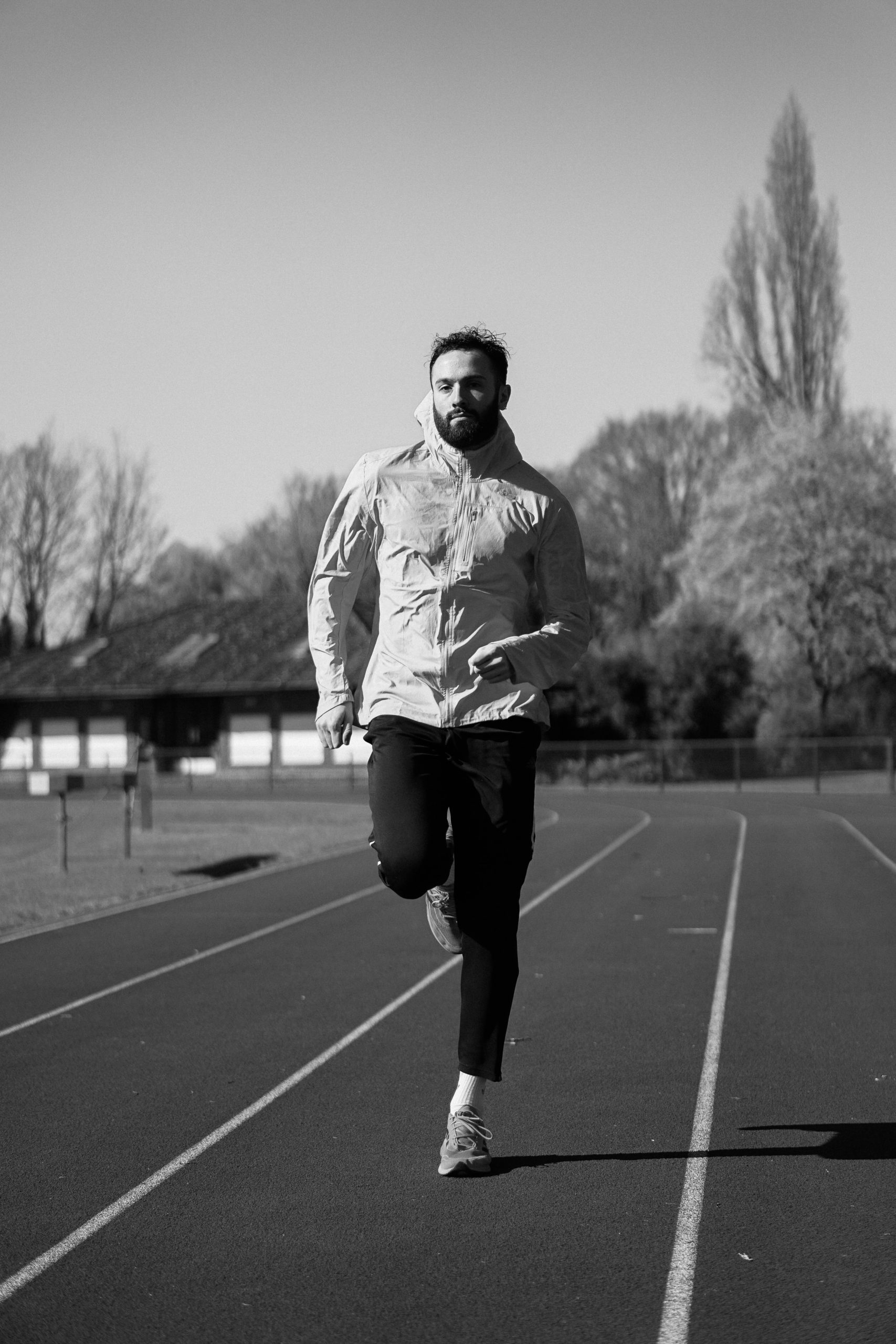
26 Feb Dividing Running Form Into Important Distinctions
Since I’m specially certified in running form and gait analysis, and since I have a few new running athletes I’m working with on this, let’s talk FORM. I’m going to break running form down into the individual pieces that make up the pie for concision and comprehension.
~ CADENCE ~ Cadence, or stride rate, refers to how often one’s foot comes into contact with the ground. The cadence to strive for, according to Dr. Jack Daniels, is 180 strides/minute. Why is cadence important? Well, the faster your cadence, the more time you’re spending in the air, the LESS time your body is in contact with the ground, and thus the more opportunity you have to increase speed, and the LESS chance you have for injury.
~ FOOT STRIKE ~ Foot strike refers to the location on your foot that comes into contact with the ground. Form coaches divide these areas up into three options: heel, midfoot, and forefoot. No foot strike location is WRONG, but two of the options can lend themselves to the possibility of issues arising more than the other: heel strikers are sometimes seen to be over-striders, have slower cadence, and can be prone to injury. Forefoot strikers, while often quick on their feet, don’t have much ROM to utilize/create power from. Additionally, perpetual pounding on the metatarsals can lead to foot problems. A midfoot strike is the most advantageous way to land when running. The midfoot provides the spongiest and most responsive area of the foot, allowing for the most dorsi- and plantar-flexion, and also allowing for the foot to land directly under the body for proper stride length.
~ FOWARD LEAN ~ To promote your most productive and advantageous form, a very slight forward lean from the ankles is beneficial as it assists in propelling you forward. Too much lean, however, forces your upper body DOWN rather than forward, and may collapse the diaphragm, resulting in breathing interference.
~ KNEE DRIVE and HEEL RECOVERY ~ These two go hand-in-hand. Both a powerful knee drive & a high heel recovery set your body up for optimal form and stride rate. A high heel recovery sets your leg up to drive down into the ground with optimal force as it travels forward from your butt. And from this position, a high knee provides forward momentum AND a response to that high heel, in order to set up the most ideal foot placement when that foot finally strikes the ground.
~ ARMS ~ Ever heard anyone say, “hip to nip!”?! Hands should graze the hip at their lowest point in their trajectory, then move fluidly back up toward the chest. PUSH back with your elbows. Lateral motion is no bueno! It moves energy away from the sagittal plane (forward, aka the direction you want to go), into the transverse plane (aka twisting side-to-side and expending extra energy moving elsewhere than forward). Also concentrate on relaxing those shoulders! Tight shoulders interfere with your breathing efficiency AND your fluid form.
I know I didn’t cover every single thing relating to running form, but those are the staples. Any questions? Do you concentrate on/attempt to improve your form?
Sorry, the comment form is closed at this time.